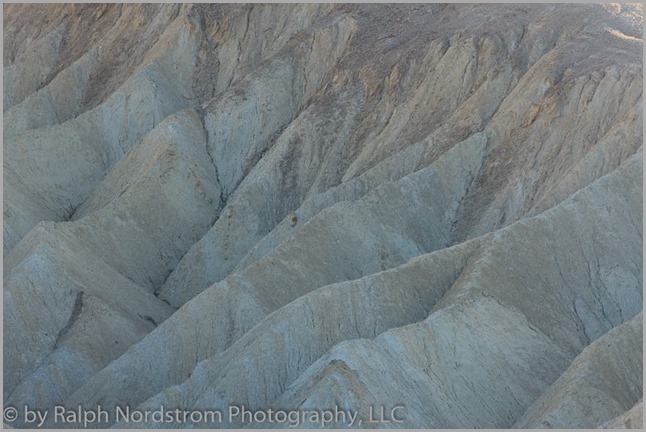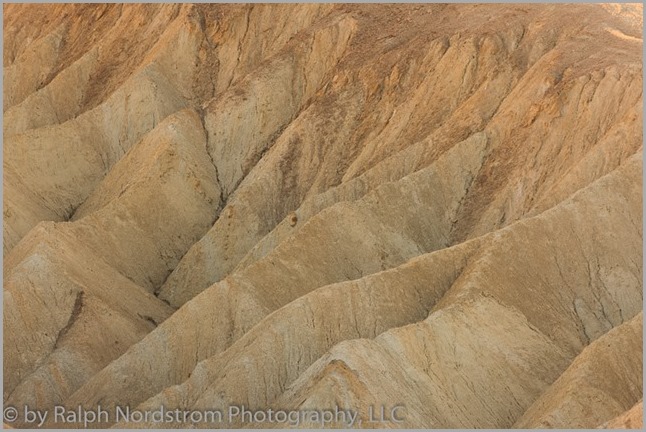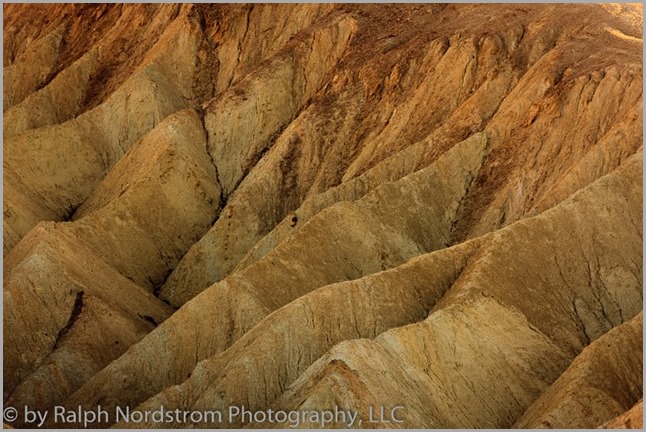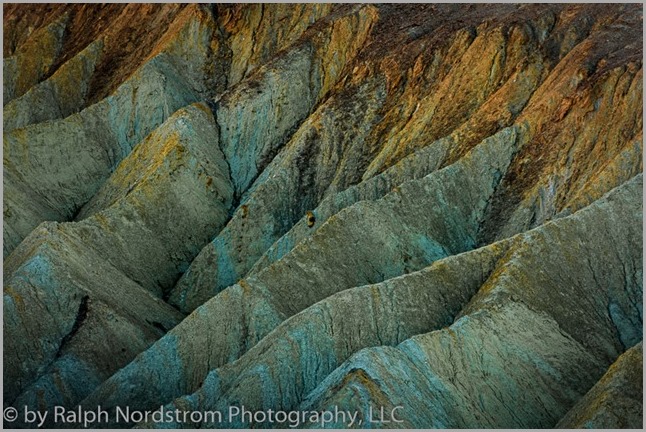Something hit me the other day on the way into work. That happens quite often. I mean I didn’t get hit by a car or anything. I got hit by an idea. And the idea this time is that there are four types of photographs. In this blog post I want to illustrate what I have in mind by showing you the same raw file rendered four different ways.
The first type of photograph is what I call “Capture.” This is the unaltered image as it comes out of the camera. When we were shooting slide film this would be the final product because slide film enhance contrast and beautifully rendered colors. But with digital photography nothing is done to the raw file by the camera. If you capture JPEG’s than the camera will increase saturation, contrast and sharpness for you so that you can end up with the near finished image. But with raw files, the camera does none of that and so the images look very flat. Here’s an example from one of my all-time favorite photography locations – Zabriskie Point in Death Valley.
Many people including a fair number of photographers think that it is preferable to not modify images that come out of a camera. And with film, one could argue that this is a valid approach. But with digital, this attitude is questionable. Because quite often the digital camera is not able to capture what we see. The human eye coupled with the interpretations given to what we see by our perception often sees something entirely different from what the camera records.
For example, when we observe a snowy scene during twilight, we see white snow. But when the camera photographs that same scene, the snow is blue. And in fact, the camera has it right. But to us it seems unnatural because we always perceive snow as white.
This leads to the second type of photograph which I will call “Realistic.” This is a photograph that is altered just enough so that it looks like what we perceived. One way of thinking about that is whether a person standing next to you when you snapped the shot would say, upon seeing the resulting photograph, “Yes, that’s what I saw.” Here’s the same photograph as above but now rendered more realistically.
The first example was taken during twilight so it had a blue cast to it. But since we don’t perceive the world as blue during twilight, I removed the blue cast. Now the badlands are rendered in the light tan that we would observe during midday. Besides being realistic, one could say that this also documents what Zabriskie Point is really like.
The third type of photograph takes adjustments a little bit further into that I’ll call “Believable.” Photographs that are believable have a stronger impact than the realistic ones but not so strong that we begin to question them. In their creation, techniques are applied that increase the impact and the emotional appeal of the photograph. These techniques are applied in moderation. Here is an example of the same image rendered in a believable fashion.
In this rendering the contrast is increased dramatically and the saturation is bumped to create heightened interest. As with the realistic image, the blue cast resulting from photographing the scene in twilight has been removed.
So what comes after this? The fourth type of photograph is what I will call “Interpretation.” This is where we leave realism and believability behind and venture into the realm of imagination. This is where anything goes and we are free to create whatever we choose, letting our imagination, creativity and artistic intent guide us. These images can lead us into the unreal and can communicate strange and wonderful impressions. All constraints are removed. Here’s just one example.
This is a whole new world in a whole new time, a wonderful journey into the unexpected. This can conjure up impressions and ideas well beyond the literal experience we have at Zabriskie Point.
I think for us as photographers and artists that it’s well for us to think in these terms. Most great landscape photographs fall into the realm of believable or interpretation. I find in my own work that I don’t often go to the extreme of interpretation as illustrated above. But many of my photographs do step over the line beyond believability, even just by a little bit. And that turns out to be my personal style. You have your personal style also, a style that is right for you.
I hope that these thoughts help to provide a framework in which you can view your art as well as the art of others. I think it’s very important to understand, however, that in the realm of art there is no right answer, there is no correct approach. Each of us gets to choose where we want to take our art. Some may like it, others may not and that’s up to them. But in the end what’s important is where each of us finds fulfillment and personal satisfaction.
Join me on one of my exciting workshops. Click here for more.
(285)





Well Said… Reality is limited imagination has no bounds.
Thanks for your comment Michael.